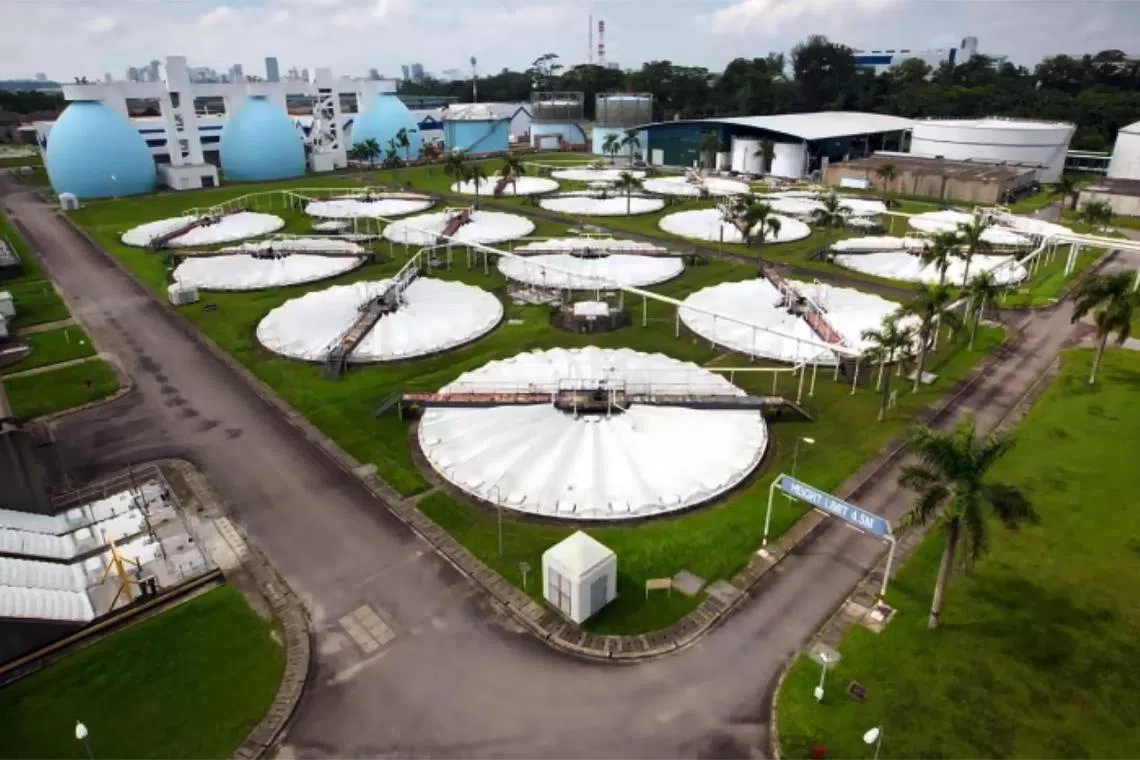Kranji water plant redevelopment triggers concerns from nature groups over impact on wildlife
Sign up now: Get ST's newsletters delivered to your inbox

PUB and URA said that agencies will study the environmental impact of the Kranji Water Reclamation Plant's redevelopment.
PHOTO: PUB
Follow topic:
SINGAPORE – The redevelopment of the Kranji Water Reclamation Plant could adversely impact the movement of wildlife between habitats along the Rail Corridor and Mandai Mangrove and Mudflat, according to nature groups here.
National water agency PUB and the Urban Redevelopment Authority said on Friday that agencies will study the upcoming plant’s environmental impact, strengthen ecological connectivity of the realigned Rail Corridor through planting, and study measures to make the Rail Corridor functionally wider where possible.
Still, nature groups and observers have questioned the adequacy of these plans to limit the impact on the area.
Ornithologist David Tan cited a 2014 National University of Singapore honours thesis which found that the development site, close to Mandai Mangrove and Mudflat, is in one of four areas on the Rail Corridor that have high bird diversity.
Mr Tan said: “Parts of the strip were only recently rewilded and will take time to mature and gain ecological function, and parts of the strip are relatively narrow – only 14.5m wide – which makes it difficult for this strip to effectively function as an ecological corridor.”
Mr Muhammad Nasry, executive director of the Singapore Youth Voices for Biodiversity, noted that segments of the Rail Corridor which connect the Mandai Mangrove and Mudflat to the Central Catchment Nature Reserve (CCNR) have already been disrupted.
For instance, Kranji Road already cuts into the corridor close to the reclamation plant.
“As there already is a connectivity gap, in principle, the only things moving between Mandai and the CCNR consistently would be more mobile species like birds,” Mr Nasry added.
He said forest-dwelling species, like the greater racket-tailed drongo, often rely on habitats with denser vegetation, hence their presence in wildlife corridors – like the Rail Corridor – suggests the corridor’s importance in facilitating their movement from one habitat to another.
These birds are sometimes spotted around Sungei Buloh Wetland Reserve, and so they may already be traversing some roads. But if the environmental mitigation efforts are not done properly, they may have trouble moving between Mandai and the Central Catchment, Mr Nasry said.
He hopes more will be done to bridge the gap, perhaps by having culverts – structures that allow water to flow underneath a road from one side to the other – that help ground-dwelling creatures such as the red-legged crake and critically endangered sunda pangolin move between habitats.
Mr Tony O’Dempsey, spokesman for Nature Society (Singapore), said the society anticipates that fauna, including colugos and flying squirrels, will move into the Rail Corridor as areas are reforested along the corridor mature.
He said: “The scientific literature calls for a minimum corridor width of 60m for the types of fauna anticipated. The realigned corridor is 23m wide and interrupted by a 4.5m wide pathway, resulting in an effective planted width of 14.5m. We consider this to be insufficient.”
National University of Singapore biologist N. Sivasothi said disrupting the connection between Mandai Mangrove and Mudflat and the Rail Corridor by clearing vegetation for the reclamation plant can affect the survival of mangroves there.
“A mangrove cannot survive isolated from terrestrial forests, which act as habitat for seed dispersers like animals, insects and birds, as well as a buffer for the mangrove,” he said.
At the moment, the Kranji node will be inadequate as it is thinly planted up, he said, adding that the question remains whether vegetation in the area will be dense enough to act as a corridor when work to clear vegetation for the reclamation plant begins.
He said: “For there to be a true wildlife corridor, there needs to be adequate forested land that links Mandai Mangrove and Mudflat to other parts of the Rail Corridor.
“This can be done through reforesting the entire corridor and enhancing Sungei Pang Sua and Sungei Mandai, which are key source habitats nearby.”

